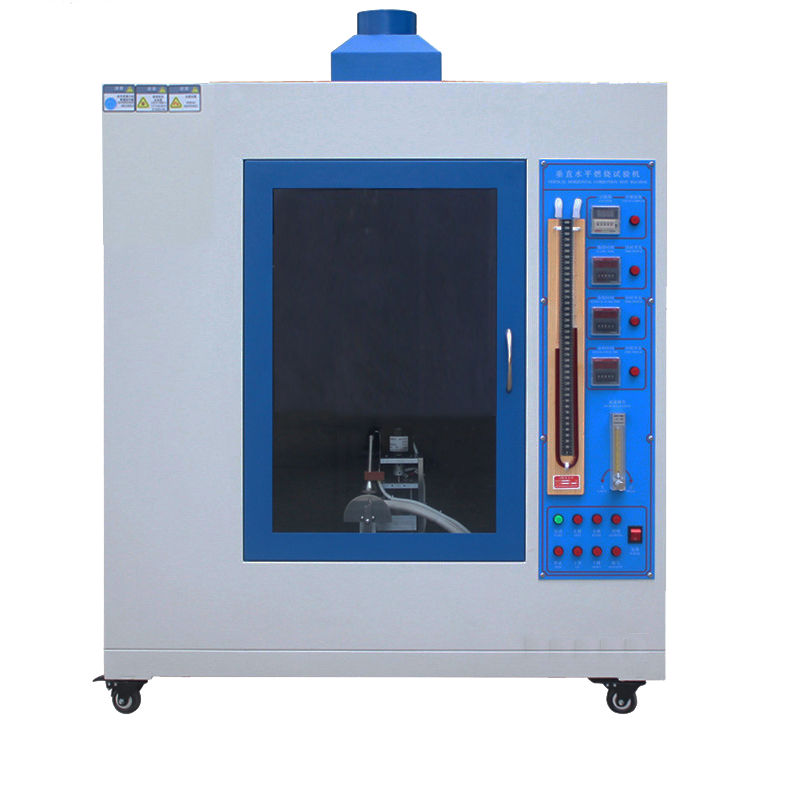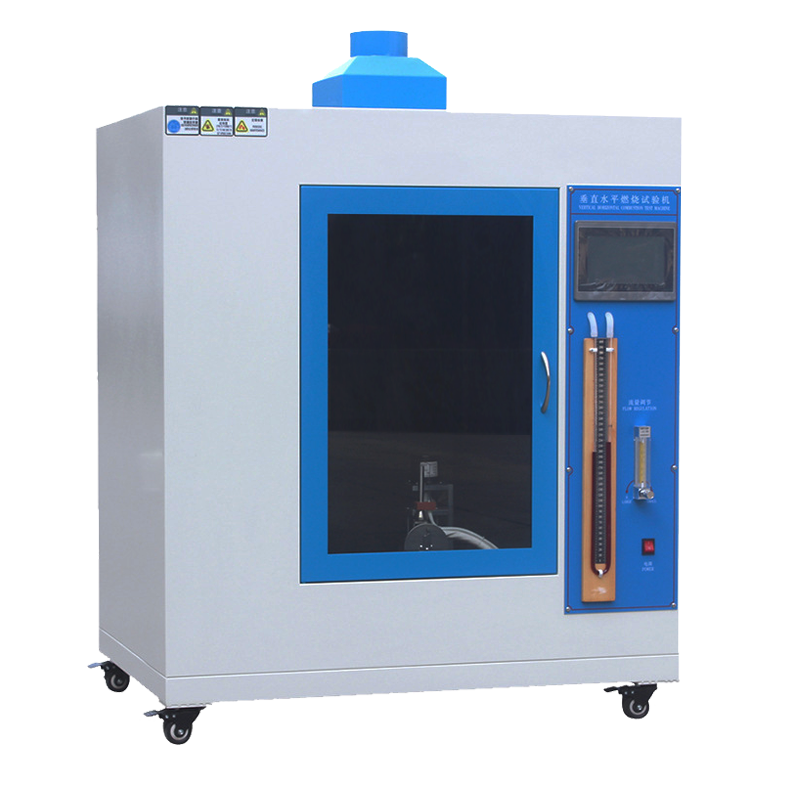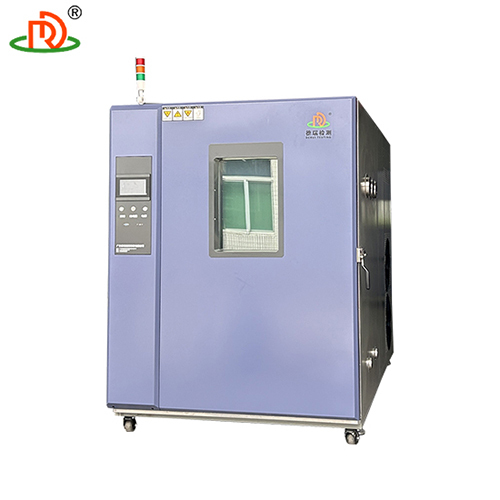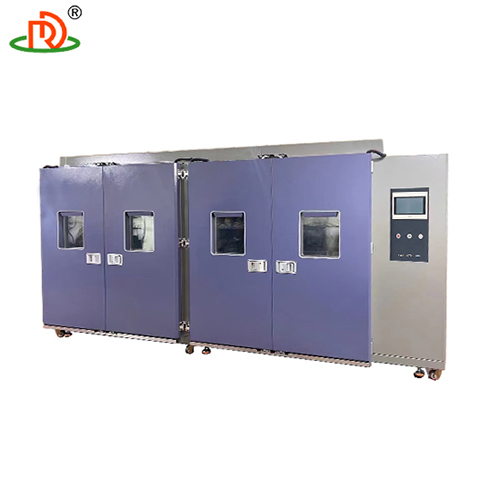Product Description
STANDARD FEATURES
| Burning Chamber Capacity | 0.75m with glass observation door |
| Burning Angle | 20 , 45 , 90 (ie 0 ) adjustable |
| Flame Time | 0 ~ 99 minutes 99 seconds can be set |
| After Flame Time | 0 ~ 99 minutes 99 seconds can be set |
| After Glow Time | 0 ~ 99 minutes 99 seconds can be set |
| Burner Dimensions | The inner diameter of the nozzle is 9.50.3mm, the effective length of the nozzle is 10010mm, and there is an air adjustment hole |
| Combustion Gas | LPG gas (Customize) |
| Flame Height | Adjustable from 20mm to 175mm as standard |
| Features | It is also equipped with lighting device, air extraction device, gas flow regulating valve, gas pressure gauge, gas pressure regulating valve, gas flow meter, gas U-shaped pressure gauge and sample fixture |
| Power | AC 220v 50HZ |
The Fully Automatic Flame Resistance Tester is a highly automated device for evaluating the fire resistance and burning behavior of materials, components or systems under the action of a high temperature flame. The equipment performs continuous high-temperature combustion tests on samples by simulating actual fire conditions, and automatically records and analyzes the test data. Fully Automatic Combustion Resistance Tester is widely used in building materials, cables, electronic and electrical appliances, automotive, aerospace and other industries to ensure the safety and reliability of the products in an actual fire. The following is the detailed introduction of Fully Automatic Combustion Resistance Testing Machine:
I. Main Uses
1.Fire resistance test: to assess the fire resistance of materials, components or systems under the action of high temperature flame, including fire resistance time, integrity, heat insulation, etc..
2.Combustion behavior analysis: analyze the behavior of the sample in the combustion process, such as flame spread rate, burning time, dripping, smoke generation, etc..
3.Quality control: used for quality control of raw materials and finished products during the production process to ensure that the products comply with fire resistance and flame retardant standards.
4.Certification testing: for product certification testing to ensure that the products comply with international and national standards, such as ISO, EN, GB, ASTM, IEC, etc.
5.R&D and Improvement: In the R&D stage, it is used to evaluate the fire resistance and combustion performance of new materials and products, and to guide product design and improvement.
II. Working Principle
Fully automatic combustion resistance testing machine evaluates the fire resistance and burning behavior of samples at high temperature by simulating the actual fire conditions, applying high temperature flame to the samples for a certain period of time. The specific steps are as follows:
1.Sample preparation: the sample to be tested is cut and pre-treated according to the standard requirements and mounted on the fixture of the tester.
2.Automatic ignition: The testing machine automatically ignites the flame, which is usually 800 to 1300, and the specific temperature is adjusted according to different standards and requirements.
3.Applied Flame: The high temperature flame is continuously applied to the sample, the test time is usually 30 minutes to 4 hours, the specific time varies according to different standards and requirements.
4.Automatic Monitoring and Recording:
- Integrity monitoring: Automatically monitor the integrity of the sample at elevated temperatures and record changes such as cracks and holes.
- Thermal insulation monitoring: automatically monitor the temperature change of the backfire surface of the sample and record the thermal insulation performance.
- Load-bearing capacity monitoring: for load-bearing components, automatically monitor the change of their load-bearing capacity under high temperature.
- Recording of burning behavior: automatically record parameters such as flame spreading speed, burning time, dripping material, smoke production, etc.
5.Automatic stop and cooling: after the test, the tester automatically stops the flame and cools down.
6.Data Processing and Evaluation: Automatically perform data processing and result calculation, generate test report, and evaluate the fire resistance performance of the sample according to the standard requirements.
III. Main Technical Parameters
1.Flame temperature: usually 800 to 1300 , adjustable, precision 10 .
2.Test time: usually 30 minutes to 4 hours, the specific time varies according to different standards and requirements.
3.Fuel type: usually natural gas, propane and other combustible gases are used.
4.Fuel flow rate: the fuel flow rate varies according to different standards and requirements, usually 0.5-2.0L/min.
5.Sample size: according to different standards and requirements, the sample size varies, usually length (1000-3000) mm, width (1000-3000) mm, thickness (100-300) mm.
6.Temperature Measurement: Equipped with high-precision temperature sensors to measure the flame temperature and the temperature of the backfire surface of the sample with an accuracy of 1.
7.Pressure Measurement: Equipped with pressure sensor to measure the pressure inside the combustion chamber to ensure the safety of the test.
8.Automatic control system: built-in microprocessor, can automatically control the test process, including ignition, timing, stopping and so on.
9.Data Recording and Analysis: Equipped with data recording and analyzing system, it can automatically record and process the test data and generate the test report.
10.Safety devices: equipped with multiple safety protection devices, such as flame monitor, overheating protector, emergency stop button, etc., to ensure safe operation.
IV. Instrument features
1.HIGH PRECISION: Adopting high-precision temperature, pressure and flow sensors to ensure the accuracy of test parameters.
2.Full automation: from sample installation, ignition, monitoring to data recording and analysis, the whole process is automated to reduce human error.
3.High safety: Equipped with multiple safety protection devices, such as flame monitor, overheat protector, emergency stop button, etc. to ensure safe operation.
4.Strong data processing capability: built-in microprocessor and data analysis system, capable of automatic data processing and result calculation, generating detailed test reports.
5.Compliance with international standards: the instrument is designed to comply with international and national standards, such as ISO, EN, GB, ASTM, IEC, etc., to ensure that the test results are authoritative and comparable.
V. Application Areas
1.Construction industry: It is used for fire resistance testing of construction materials and components, such as firewalls, fire doors, doors and windows, floor slabs, etc.
2.Cable industry: used for fire resistance testing of cables and electrical equipment to ensure the safety of the power system in case of fire.
3.Electronic and electrical appliances: used for fire resistance performance test of electronic components, electrical accessories, household appliances and other products.
4.Automotive and aerospace: used for fire resistance testing of automotive interiors, aerospace materials and other products.
5.Scientific research institutions: for the research and development of new materials, new products and fire resistance performance assessment.
VI. Precautions
1.Safe operation: the operation process should strictly comply with safety regulations to avoid high temperature flames, gas leakage and other dangerous situations.
2.Sample preparation: the sample should be cut and pre-treated according to the standard requirements to ensure that its size and mounting method meet the requirements.
3.Environmental conditions: the instrument should be placed in a well-ventilated environment with suitable temperature to avoid environmental factors affecting the test results.
4.Periodic calibration: The instrument should be calibrated periodically to ensure the accuracy of the temperature, pressure and flow measurement results.
5.Personnel training: operators should be professionally trained and familiar with the operating procedures and safety precautions of the instrument.
VII. Common brands and models
1.ISO 834: International Organization for Standardization (ISO) standard, which specifies the fire resistance test methods for building components.
2.EN 1363: European Standard, which specifies the fire resistance test methods for building components.
3.GB/T 9978: Chinese national standard, which specifies the fire resistance test methods for building components.
4.ASTM E119: American Society for Testing and Materials (ASTM) standard, which specifies the fire resistance test methods for building components.










 English
English Spanish
Spanish French
French German
German Italian
Italian Chinese (Simplified)
Chinese (Simplified) Japanese
Japanese Korean
Korean Arabic
Arabic Portuguese
Portuguese